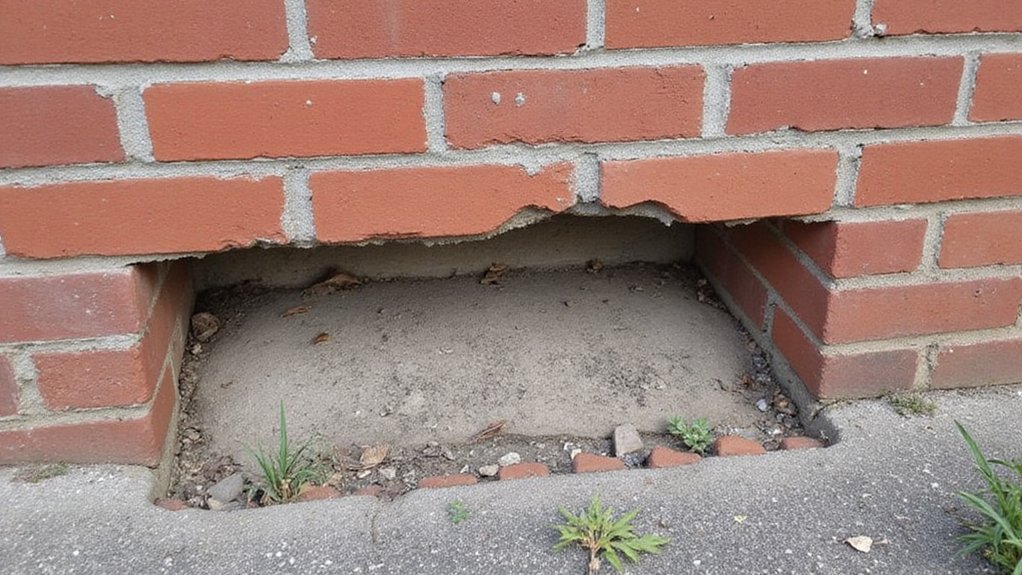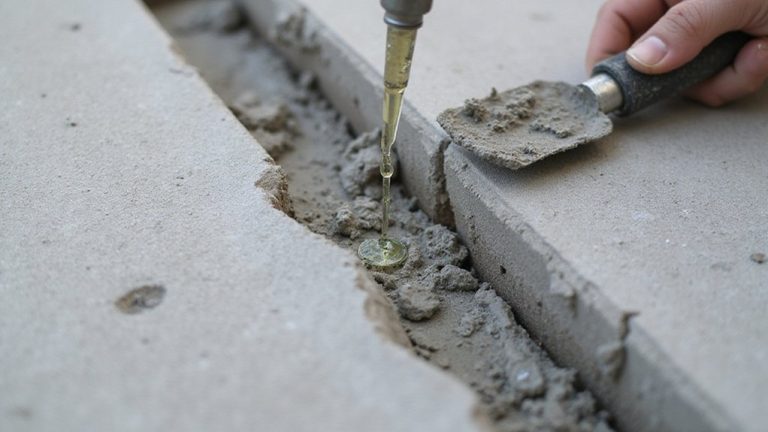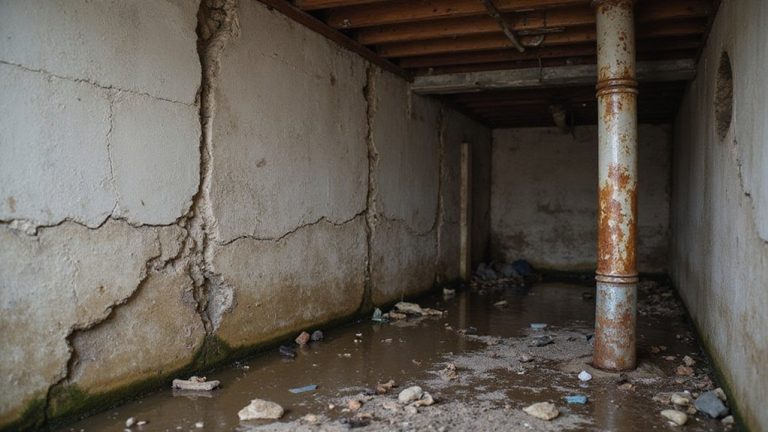If you’re dealing with bowing walls, you’re not alone. This common issue can stem from various factors, like shifting soil or poor drainage. But don’t worry – there are solutions. Wall anchors and foundation reinforcement can stabilize and reinforce your home, preventing further damage. The key is understanding the root cause and taking the right steps to address it. Let’s investigate the details and reveal the best way to fix your bowing walls.
Understanding the Causes of Bowing Walls
Bowing walls can be a concerning issue for homeowners, but understanding the underlying causes is the first step in finding an effective solution. Variations in soil moisture and groundwater fluctuations are common culprits. As the soil expands and contracts due to moisture changes, it can exert uneven pressure on the foundation, causing the walls to bow inward. This problem is often exacerbated by poor drainage or leaks in the plumbing system. Heavy, water-logged soil from poor drainage and runoff can also contribute to the issue. Identifying the specific factors contributing to the problem is pivotal for developing a targeted repair plan that addresses the root cause and prevents future occurrences.
Identifying the Signs of Bowing Walls
As a homeowner, you may start to notice subtle signs that your walls are bowing inward. Checking for cracks, both horizontal and vertical, is one way to identify this issue. Additionally, monitoring the alignment of your walls can reveal if they’re gradually shifting out of place. Look for gaps between the wall and the ceiling or floor, or observe if doors and windows are no longer closing properly. Significant cracking requires stabilization by a certified foundation contractor.
Diagnosing the Severity of Wall Bowing
Once you’ve identified the signs of bowing walls in your home, it’s important to diagnose the severity of the issue. Assessing wall displacement is paramount, as it can indicate the extent of the problem. To do this, you’ll need to:
- Measure the distance between the wall and a straight edge, such as a level or string, at various points along the wall.
- Compare these measurements to determine the degree of bowing.
- Evaluate the structural integrity of the wall by checking for cracks, joint separation, or other signs of structural damage.
Evaluating the severity of the bowing is vital for determining the appropriate course of action.
Installing Wall Anchors to Stabilize Bowing Walls
If your home’s walls are exhibiting noticeable bowing, installing wall anchors can be an effective solution to stabilize and strengthen them.
The proper installation techniques involve carefully preparing the wall by cleaning the surface and drilling pilot holes. Wall anchors are then securely fastened into the wall, using a torque wrench to guarantee the correct tension. This process helps to gradually pull the bowed wall back into its proper position, restoring structural integrity.
With the right approach, wall anchors can be a reliable and cost-effective way to address the issue of bowing walls.
Underpinning the Foundation to Address Bowing Walls
Sometimes, the solution to bowing walls may require more than just wall anchors. In certain cases, bolstering the foundation may be necessary to address the root cause of the issue.
This process involves raising the foundation to provide additional support and stability. Here are three key benefits of bolstering the foundation:
- Restoring structural integrity by reinforcing the foundation.
- Preventing further wall displacement and bowing by addressing the underlying problem.
- Retrofitting the basement to boost the overall home’s stability and safety.
Bolstering the foundation can be a more complex and invasive solution, but it may be the best option to permanently fix bowing walls.
Waterproofing to Prevent Further Wall Bowing
While addressing the foundation can help resolve the underlying cause of bowing walls, waterproofing the basement can also be a critical step in preventing further wall displacement.
Moisture intrusion from groundwater or leaks can exacerbate the problem, causing the walls to bow even more. Applying high-quality wall sealants and waterproofing membranes to the interior or exterior of the basement walls can create a barrier against moisture, reducing the risk of further bowing. This proactive approach can help safeguard your home’s structural integrity and provide peace of mind.
Maintaining and Monitoring Bowing Wall Repairs
With the critical step of waterproofing now complete, you’ll want to focus on properly maintaining and closely monitoring the bowing wall repairs. This includes:
- Scheduling regular inspection schedules to check for any new cracks, shifts, or changes in the wall’s condition.
- Hiring professional contractors to perform thorough assessments and make necessary adjustments or additional reinforcements.
- Keeping detailed records of all repair work and monitoring efforts, ensuring the long-term durability and effectiveness of the solutions.
Staying vigilant and proactive will help you protect your home and provide peace of mind.
Frequently Asked Questions
How Much Do Wall Anchor Repairs Typically Cost?
Wall anchor repairs typically cost between $150-$500 on average. The typical pricing for a wall anchor installation depends on the size and complexity of the project, but you can expect to pay a fair price for this essential repair.
Can Bowing Walls Be Fixed Without Replacing the Foundation?
Yes, bowing walls can often be fixed without replacing the foundation. Solutions like wall anchors or braces may address foundation settlement issues or soil expansion problems without the need for a full foundation replacement.
How Long Does a Bowing Wall Repair Project Take?
The time it takes to repair a bowing wall depends on the extent of the damage. A professional contractor can assess the issue and provide an estimate, but the project may require several weeks to complete.
Are There DIY Solutions for Addressing Minor Wall Bowing?
You can try DIY solutions like reinforcing wall panels or wall bracing methods to address minor wall bowing. These can help restore the wall’s stability and prevent further damage without a major repair project.
Will Homeowner’s Insurance Cover Bowing Wall Repair Expenses?
Your homeowner’s insurance may cover bowing wall repairs, but it depends on your policy limits and deductible requirements. Check with your provider to see if this type of damage is included in your coverage.



